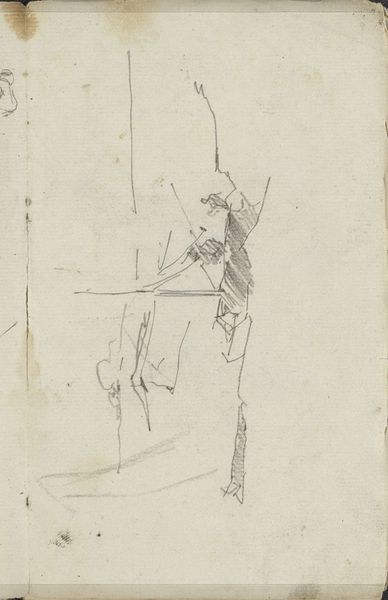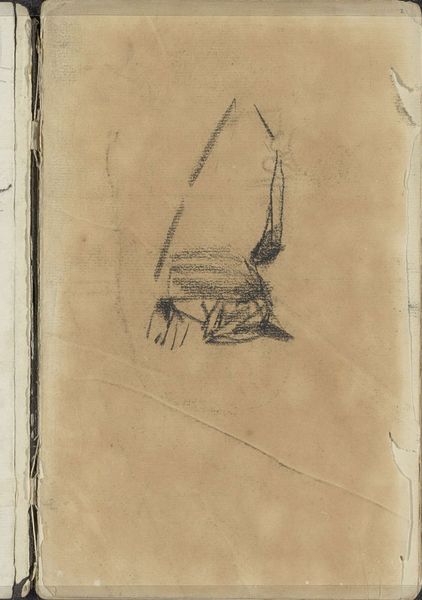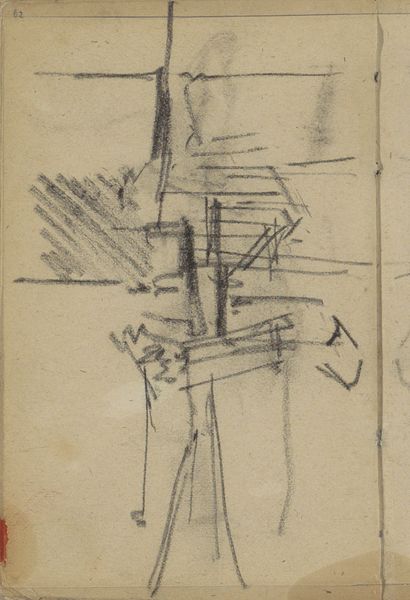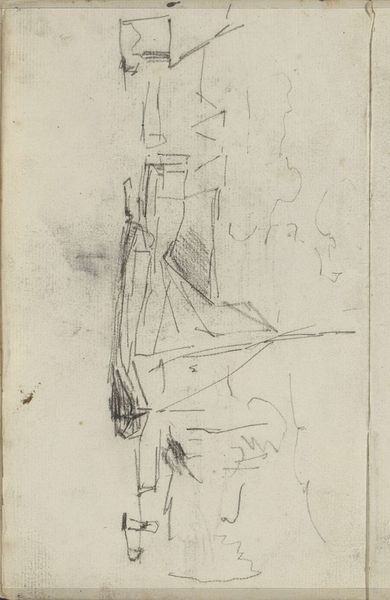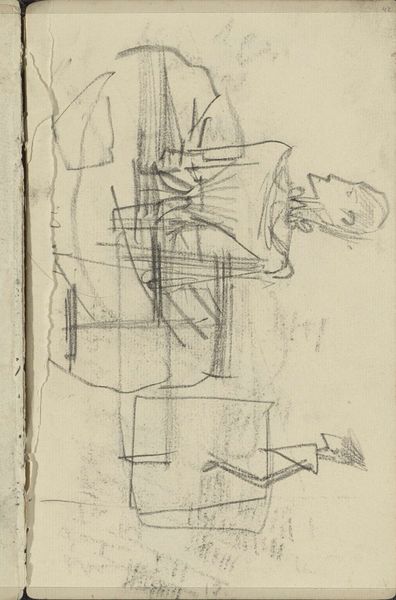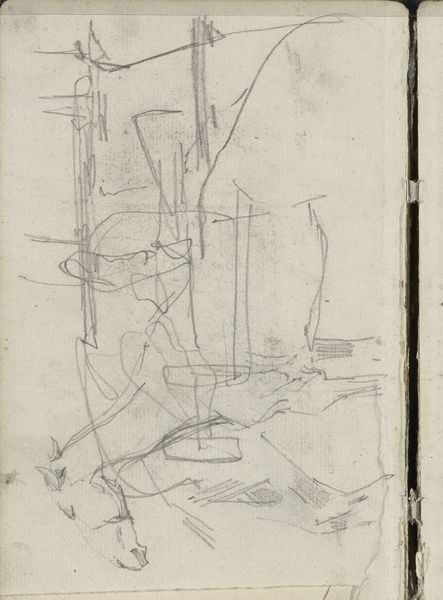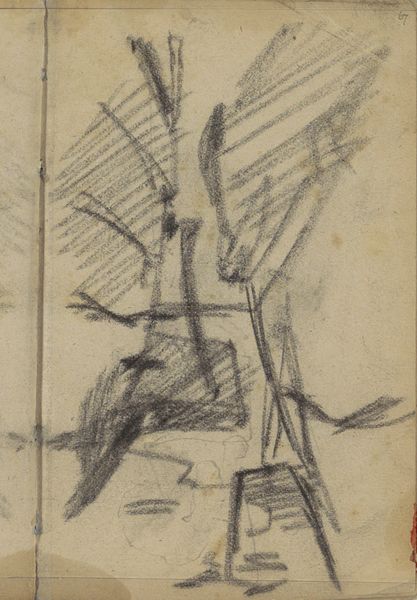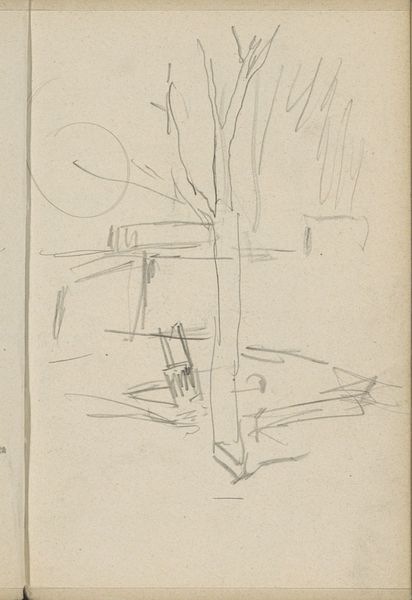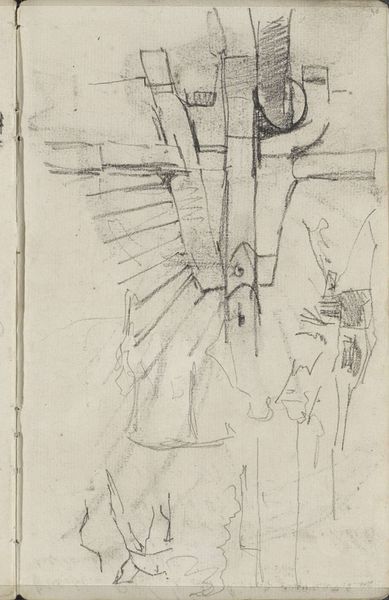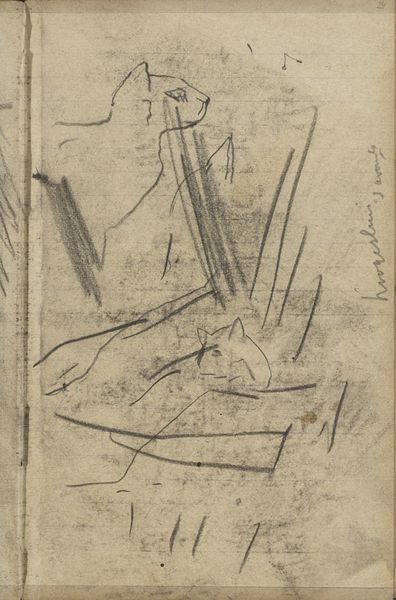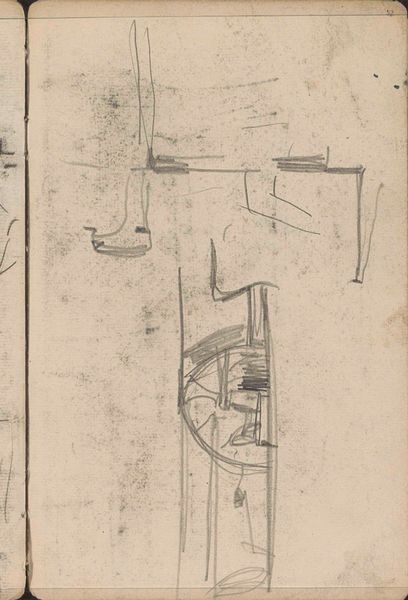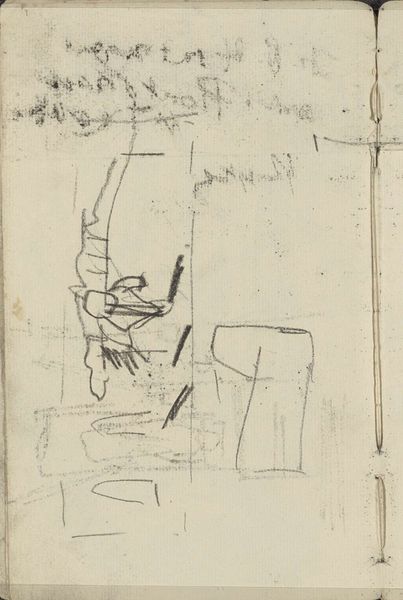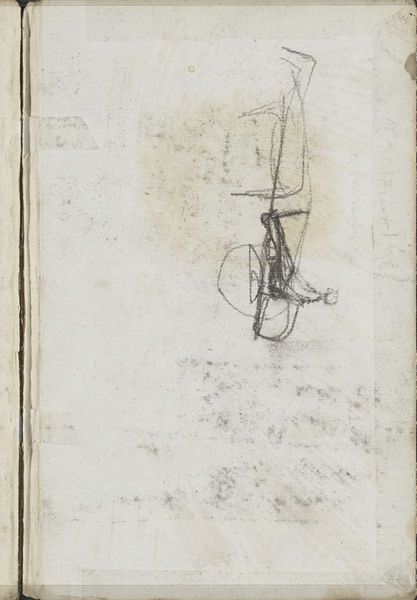
Copyright: Rijks Museum: Open Domain
Curator: I find this pencil drawing by George Hendrik Breitner, titled "Paard met tuig", arresting, particularly given its estimated creation date between 1889 and 1904. There's a raw, almost brutal, quality to the marks on paper. Editor: It's more a suggestion of a horse than a realistic depiction. The hasty lines definitely give an unfinished feeling—sketchy even. Curator: Indeed. And perhaps it reveals Breitner’s interest in capturing the energy and immediacy of a fleeting moment. Horses often represent power, freedom, even nobility—themes quite romantic but disrupted with these rough, unfinished lines. I wonder what narratives he wished to express, what symbolic potential drew him to constantly observe and represent them. Editor: Looking closely, you see the quick layering of pencil strokes creating shadows, giving weight to the animal. Given the medium—paper and pencil—and the date, it would have been readily accessible. I’m thinking of the urban context in which Breitner worked; this would’ve provided both subject matter and a quick, relatively inexpensive means of documenting it. It bypasses academic traditions, favoring direct engagement with daily life and an openness towards new audiences. Curator: And that directness adds a unique layer to the artwork's meaning. The image is unrefined, honest, and it lacks any attempt to beautify its subject—which invites more intimate contemplation. It almost democratizes a subject like the horse, so steeped in aristocratic visual history. It’s intriguing to find symbols so consciously stripped bare in a new era. Editor: You're right, thinking about materials brings so much into focus—it allows a raw expression through an affordable channel. A sketch on readily sourced paper places labor, process, and accessibility in view, challenging a fixed idea of “high art.” Curator: Absolutely. In conclusion, this image reminds us that within the rapid impressions of modernity, even traditional figures become unstable, forcing new dialogues and perspectives that feel so prescient for us today. Editor: Indeed, what Breitner leaves out speaks as powerfully as what he includes. The work exists, seemingly, between a desire to quickly represent what he sees versus making a commentary on the changing modes of life he witnesses around him.
Comments
No comments
Be the first to comment and join the conversation on the ultimate creative platform.
